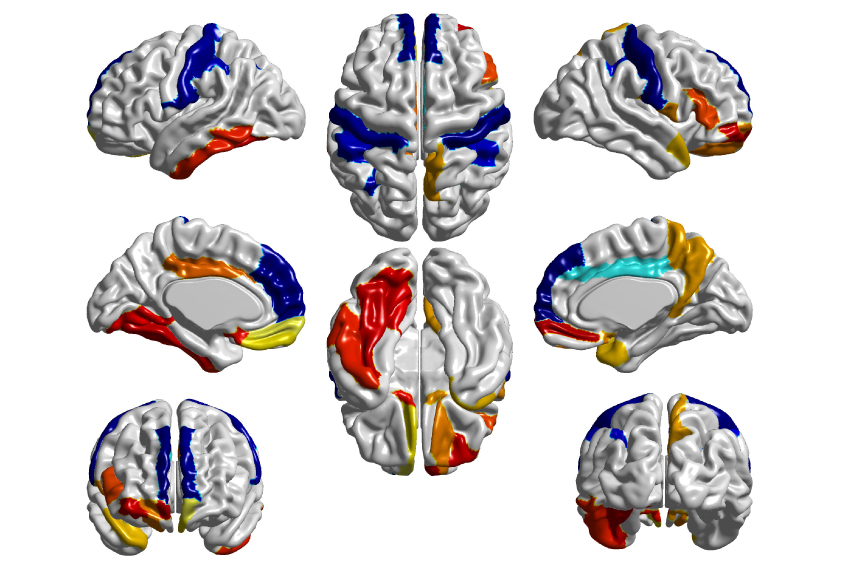
THIS ARTICLE IS MORE THAN FIVE YEARS OLD
This article is more than five years old. Autism research — and science in general — is constantly evolving, so older articles may contain information or theories that have been reevaluated since their original publication date.
The faster the brains of children with autism grow in their first year of life, the more severe their autism features are likely to be at age 2, according to a study published today in Nature1.
This rapid growth can in fact predict whether a child will later be diagnosed with autism.
The findings point to a possible biomarker that could help doctors identify autism in infants —two to three years before the typical age of diagnosis.
“This is a first step towards something that has tremendous potential for early identification and intervention,” says lead investigator Joseph Piven, Thomas E. Castelloe Distinguished Professor of Psychiatry at the University of North Carolina at Chapel Hill.
The results add to mounting evidence that subtle signs of autism may appear in infancy. For example, some baby boys who are later diagnosed with autism lose interest in looking at others’ eyes during the first 6 months of life.
“It’s showing us that the early postnatal years are critical to study in order to understand autism,” says Mark Johnson, director of the Centre for Brain and Cognitive Development at Birkbeck, University of London, who was not involved in the new work.
The findings also jibe with work in the past decade suggesting that brain overgrowth in infancy occurs in a subset of children with the condition2. The new study begins to clarify which brain regions are most affected and hints at the underlying mechanism.
Growing pains:
The researchers used magnetic resonance imaging (MRI) to scan the brains of 148 infants, 106 of whom have an older sibling with autism. These so-called ‘baby sibs’ are about 20 times more likely to have autism than are children in the general population. All of the children in the study are part of the Infant Brain Imaging Study (IBIS), which tracks the development of more than 300 babies with a family history of autism.
The researchers measured the children’s total brain volume at 6, 12 and 24 months of age. They also looked at the surface area and thickness of the cerebral cortex, the brain’s outer layer. They assessed the children’s cognition, daily-living abilities and communication skills. Of the 106 baby sibs, 15 received an autism diagnosis at age 2.
The surface area of the cortex grows significantly faster between the ages of 6 and 12 months in children with autism than in those without the condition, the researchers found. The expansion occurs primarily in regions that process visual information.
“It’s not simply generalized overgrowth,” says Gordon Ramsay, director of the Spoken Communication Laboratory at the Marcus Autism Center in Atlanta, Georgia, who was not involved in the study.
Between 12 and 24 months of age, the surface area growth rate evens out in the two groups. At that point, the overall brain volume increases faster in children with autism than in controls. The faster growth is associated with poor performance on tests of social communication.
The findings suggest that surface expansion of the brain precedes overall overgrowth and the emergence of autism features. This sequence is consistent with results in mice.
The molecular mechanisms underlying brain surface area expansion — many of which are known — may also provide clues to how autism unfolds, Piven says.
Predictive potential:
The researchers input measures of surface area, thickness and volume at 6 and 12 months into a machine-learning algorithm to predict which infants would later be diagnosed with autism. The data came from brain scans of 34 baby sibs with autism and 145 baby sibs without the condition, all participants in IBIS.
The algorithm analyzed data from all but 10 of the participants to predict the diagnostic status of the remaining individuals, and repeated the process 10 times. The computer correctly predicted an autism diagnosis for 81 percent of the children.
Many of the measurements the algorithm relied on most are related to surface area, and came from 6-month-old children. The brain regions involved are different from those that show rapid surface area expansion in autism, Ramsay says. “The fact that they’re not consistent suggests that some of the expansion in surface area may actually not be relevant to the detection of autism,” he says.
If the findings hold up in a larger, independent sample of children, the algorithm might be a useful tool for predicting autism in baby sibs, Piven says.
But some experts say using brain scans to screen for autism is an impractical proposition; only about one-third of the infants enrolled in IBIS were able to complete brain scans at all three ages, Johnson notes. “It’s unlikely that’s going to be adopted as a screening protocol.”
The researchers acknowledge this limitation. Parents who already have a child with autism may find it particularly difficult to show up for repeated brain scans, Piven says.
It is unclear whether brain growth will be predictive of autism in children without a family history of the condition. Piven says a next step is to compare brain growth patterns in children who have autism with those of children who have other neurodevelopmental conditions.
By joining the discussion, you agree to our privacy policy.